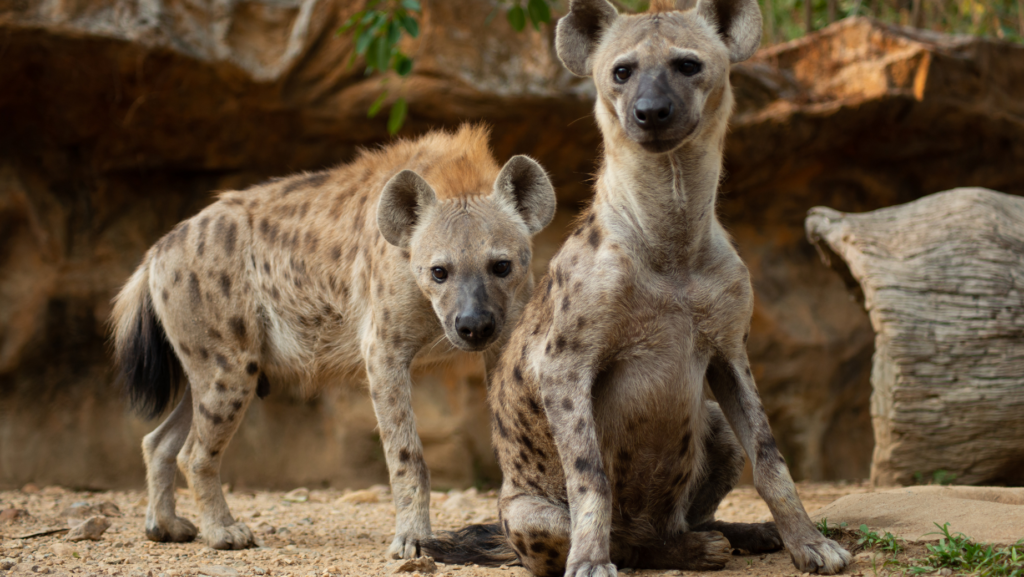The brown hyena (Parahyaena brunnea), also called strandwolf,[4] is a species of hyena found in Namibia, Botswana, western and southern Zimbabwe,[5] southern Mozambique and South Africa.[6] It is the only extant species in the genus Parahyaena. It is currently the rarest species of hyena.[7] The largest remaining brown hyena population is located in the southern Kalahari Desert and coastal areas in Southwest Africa.
Birth and Early Life

The brown hyena (Hyaena brunnea) is a unique and elusive species native to Southern Africa. The birth of brown hyenas typically occurs in a den, often located in rocky crevices or abandoned burrows. Female brown hyenas usually give birth to two to three cubs in a litter, and the newborns are born with their eyes closed and a fine coat of fur. Cubs stay in the den for several weeks before venturing outside, relying on their mother’s care and protection during this vulnerable stage.
Growth and Development

As the brown hyena cubs grow, they begin to explore their surroundings under the watchful eye of their mother. The family unit is crucial for survival, as brown hyenas are known for their cooperative social structure. Cubs start to learn essential hunting and foraging skills by observing and participating in activities with the adult members of the clan.
Food and Feeding Habits
Brown hyenas are omnivores with a diverse diet that includes scavenging and hunting. Their feeding habits are opportunistic, and they consume a variety of food, including carrion, small mammals, birds, fruits, and insects. Brown hyenas are adept scavengers, often relying on their powerful jaws to access bone marrow and tough hides. They also engage in communal feeding, allowing multiple individuals to share a carcass.
Habitat and Range

Brown hyenas inhabit a range of ecosystems, from semi-desert regions to coastal areas. They are well-adapted to arid environments and can be found in countries such as Namibia, Botswana, South Africa, and Zimbabwe. These hyenas are particularly associated with rocky terrain, utilizing natural shelters for denning and protection.
Reproduction and Social Structure
The reproductive behavior of brown hyenas is complex and involves a hierarchical social structure within a clan. Dominant females typically have priority in breeding, and the entire clan, including both males and females, contributes to raising the young. Breeding can occur throughout the year, and the gestation period is around three months.
The social structure of brown hyenas is marked by cooperation and communication. Clans consist of related individuals led by a dominant female, and they engage in vocalizations, scent-marking, and body language to communicate within the group.
Death and Life Span

Brown hyenas face various threats, including habitat loss, human-wildlife conflict, and persecution due to misconceptions about their role as scavengers. Their life span in the wild is estimated to be around 12 to 15 years, but factors such as predation, disease, and human-induced mortality can affect their longevity.
In conclusion, the brown hyena’s life cycle involves intricate social dynamics, adaptability to diverse environments, and a combination of scavenging and hunting behaviors. Conservation efforts are crucial to ensure the survival of this species, contributing to the rich biodiversity of Southern Africa.

